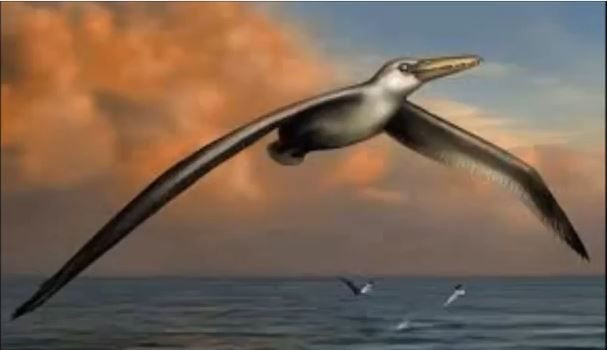
A rare discovery was made of the world's largest-ever flying bird: the Pelagornis sandersi (P. sandersi). Scientists have identified and analyzed the fossils to confirm the claim of the extinct bird specimen. Information surrounding the fossil, which was discovered by construction workers 31 years ago whilst working on a new terminal of the Charleston International Airport in South Carolina, was published in the journal "Proceedings of the National Academy of Sciences."
"A giant bird lands at an airport 25 million years too soon -- it's kind of amusing," said study author Daniel Ksepka of North Carolina State University in Raleigh to largest bird in the world. "Maybe he should have just waited and landed on the new runway."
1. When did it live? Researchers believe the bird inhabited the planet 25 million to 28 million years ago.
2. How big was it? Estimates by scientists suggest the bird had a wingspan of 20- to 24-feet. According to the National Evolutionary Synthesis Center in North Carolina, the bird would be double the size of the largest flying bird alive today -- the royal albatross.
3. How did it live? Scientists believe that the bird would have to run downhill in order to take off into flight and it was capable of being in air without flapping its wings courtesy of its thin, hollow bones.
4. Where will the remains be? The fossil will be in the Charleston Museum and the bird has reportedly been named in honor of retired museum curator Albert Sanders.
"Pelagornithidae is an extinct clade of birds characterized by bizarre tooth-like bony projections of the jaws," wrote the authors of the study in their abstract. "Here, the flight capabilities of pelagornithids are explored based on data from a species with the largest reported wingspan among birds. Pelagornis sandersi sp. nov. is represented by a skull and substantial postcranial material. Conservative wingspan estimates (∼6.4 m) exceed theoretical maximums based on extant soaring birds. Modeled flight properties indicate that lift:drag ratios and glide ratios for P. sandersi were near the upper limit observed in extant birds and suggest that pelagornithids were highly efficient gliders, exploiting a long-range soaring ecology."
© 2025 Latin Times. All rights reserved. Do not reproduce without permission.




